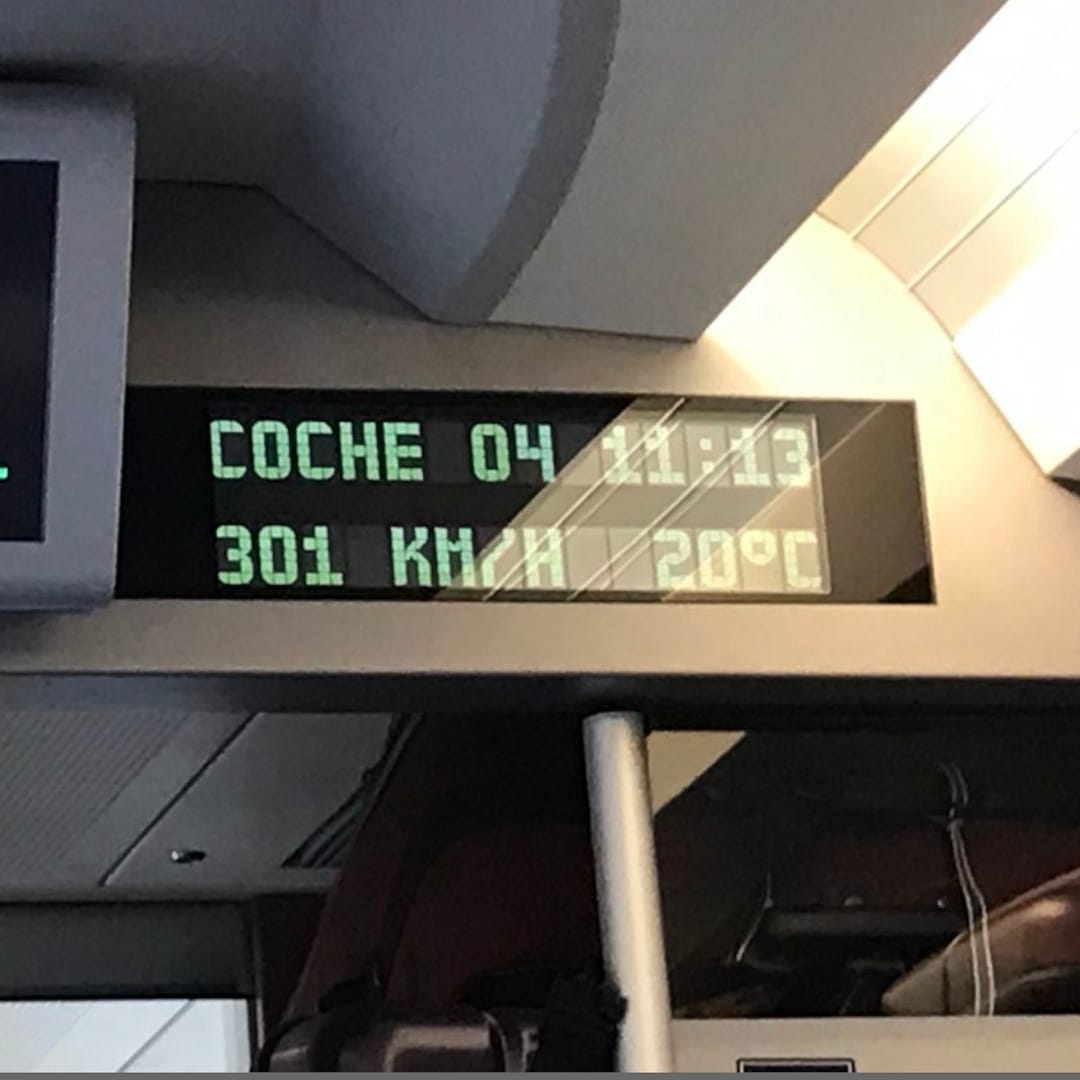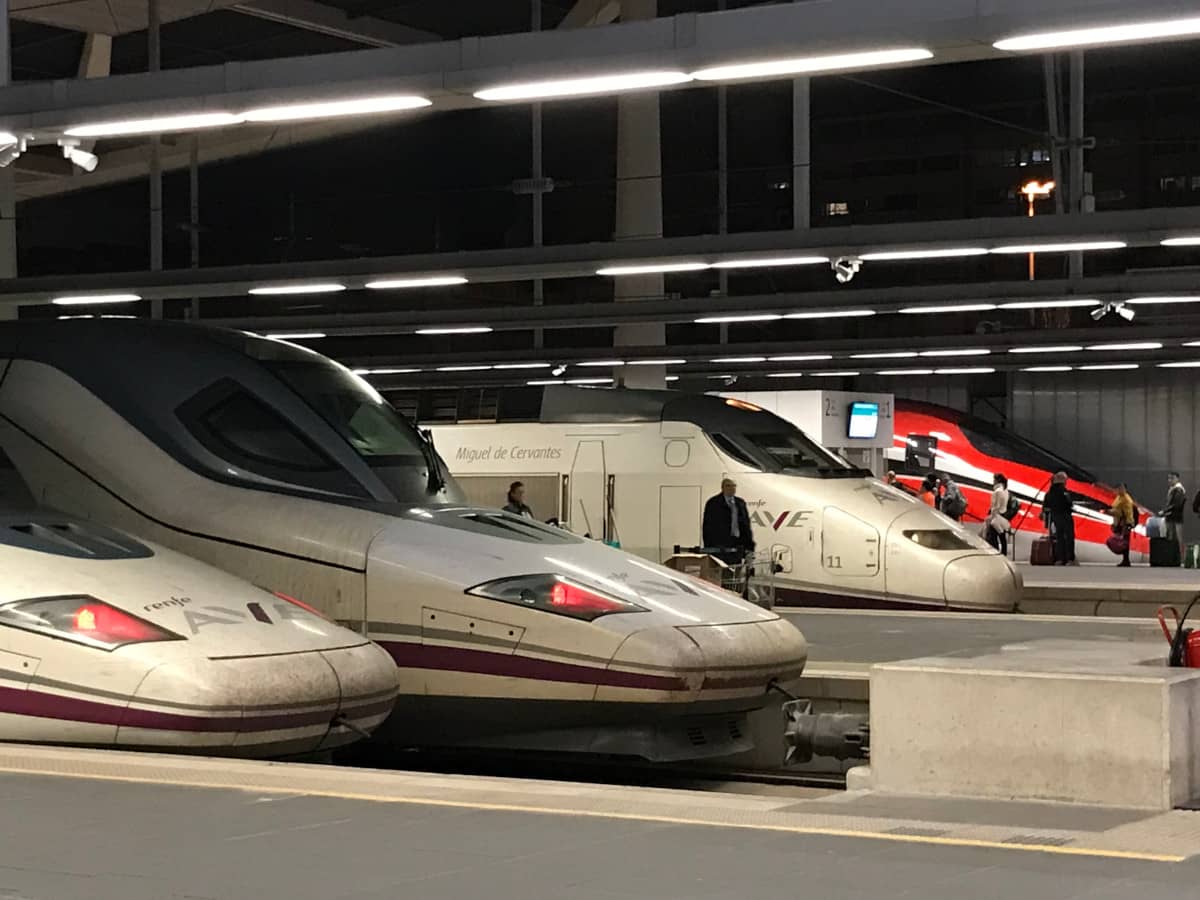You see things; and you say Why? But I dream things that never were; and I say Why not?
George Bernard Shaw
Musing at 200+ kilometers an hour

A recent trip to Barcelona by Renfe got me thinking anew about how this would work in where I’m from. That is: Is it possible to have high-speed trains in Texas? I’ve extolled the virtues of rail travel before and I wanted to put this in perspective for Texans.
This is not a screed about commuter rail. I know that most U.S. cities are charactized by low population densities that make a lot of that impractical. Taking a look at how Texan metro areas are somewhat similarly spaced out like Spanish cities is useful for long-haul, passenger rail service.. Don’t worry, this isn’t going to be full of wonky, deep-in-the-weeds research. If you want that, you can click on the links in the text for more information
Some demographics

Texas is about 1.3 times bigger than Spain. The country’s overall population of 47 million (2023 est) compares to Texas’ 30 million inhabitants in 2022. Like west Texas, a large part of inland Spain is largely uninhabited or in the process of depopulating.
The Madrid, Barcelona, and Valencia metro areas, according to figures here, are conservatively estimated to have about 12 million people in total. Conversely, the “Texas Triangle,” which covers the area between Dallas-Fort Worth, Houston, San Antonio and Austin, has 21 million. Yes, not all those people live within the metro areas of the largest cities; I’d say there are about 19 million residents – give or take – along the route.
Finally, at the 8:50 mark on this YouTube video is a good comparison of Spain’s rail options to the U.S.’s current service. If you haven’t watched CityNerd’s YouTube channel before, it’s really enlightening.
Yes, admittedly I wouldn’t actually cite most of the sources above for an academic paper. It is, however, a starting place to find the source material to confirm the context and suitability. And for a thought experiment, it’s accurate enough.
Where would it work in Texas?

I know that the Texas two-step rail plan, a Houston to Dallas-Fort Worth connection, is facing opposition. A lot of the pushback seems to originate on two fronts: overt NIMBYs (Not In My BackYard) and subtle business interests (looking at you Southwest Airlines!).
As climate change forces choices upon us, can we continue to use highly polluting air travel for relatively short-haul flights of about an hour or so? Or will technology save us from that choice by the creation of electric-powered or alternative-fueled aircraft serving those routes? If anything is possible what is probable? Currently, Spain is considering the banning of flights on routes that are also served by trains with less than 2 1⁄2 hours travel time. This is helped by having an extensive rail network already in place.
Getting there from here

My day trip by rail to Barcelona started at 6:50 a.m. and I was back in Valencia before 10:00 p.m. and it cost me $93.21. For comparison, an air ticket between SAT and HOU, purchased two weeks out, is about $300, according to Google. I’m using that timespan because that’s how long in advance I bought my train tickets.
Yes, there are cheaper flights or driving options and the comparison is for a two-week-in-advance booking. Flight time on the San Antonio-to-Houston route is just over an hour. Factor in driving, parking (or drop off), security lines, and then traffic time to downtown from the airport, I’d say you’re looking at the exact same time as the three hours by train. And the VLC-BCN connection isn’t the fastest. Interestingly, I can get to Madrid quicker, which about the same distance. That’s a story for another day.
The idea of building and rebuilding highways to accommodate more traffic does little to alleviate congestion. If you build it, they will come in increasingly larger numbers. Then add in the externalities of pollution, time lost standing in traffic, and urban sprawl, then one sees an equation that doesn’t add up. More freeway lanes create more vehicle traffic and eventually return the commute period to its previous sluggishness.
Economically and environmentally using the train makes sense. Texas is the land of big spaces and big ideas. It’s the short-term thinking of “what’s in it for me” politics that’s impeding the long-term benefits of change. Visitors tell me how impressed they are by the trains in Spain. Then in the next breath they say “but it’ll never work in the U.S.” To a large part that’s true for smaller cities. With the growth of the mega-metro it’s an idea that needs to be considered as part of the big picture of how we get around in the Lone Star state.



Leave a Reply